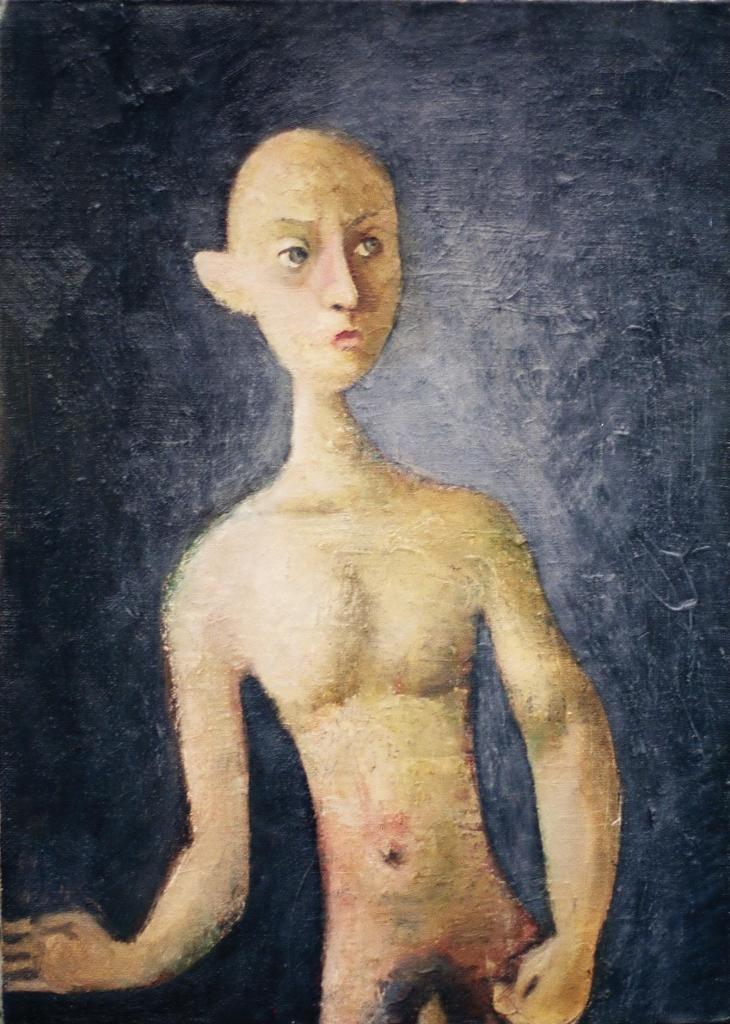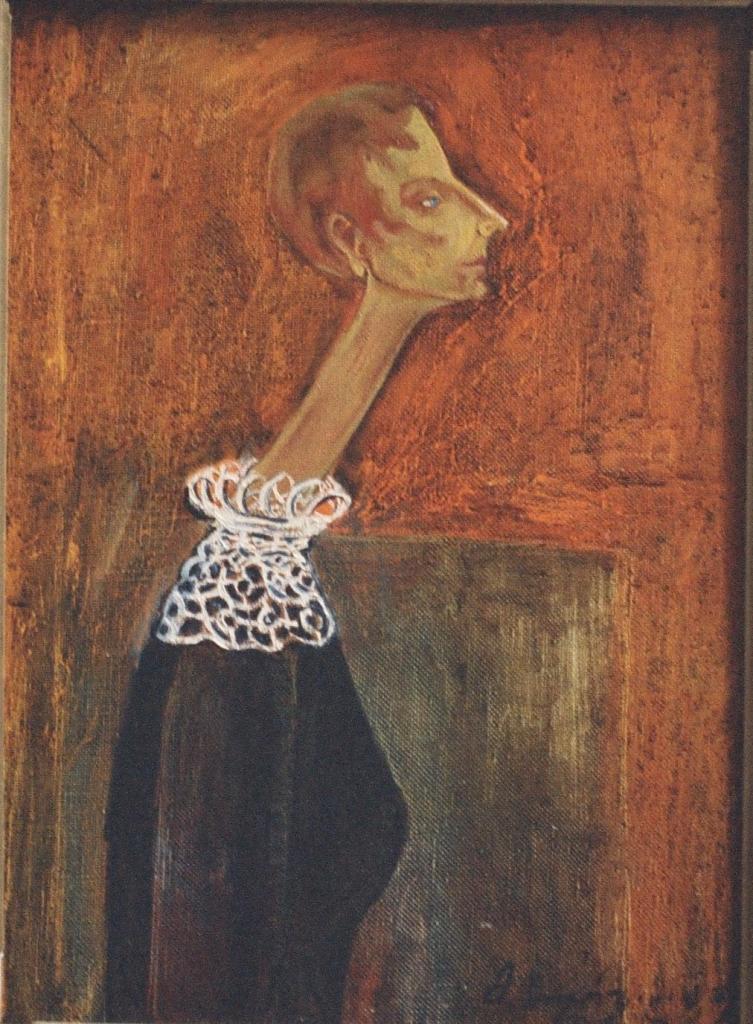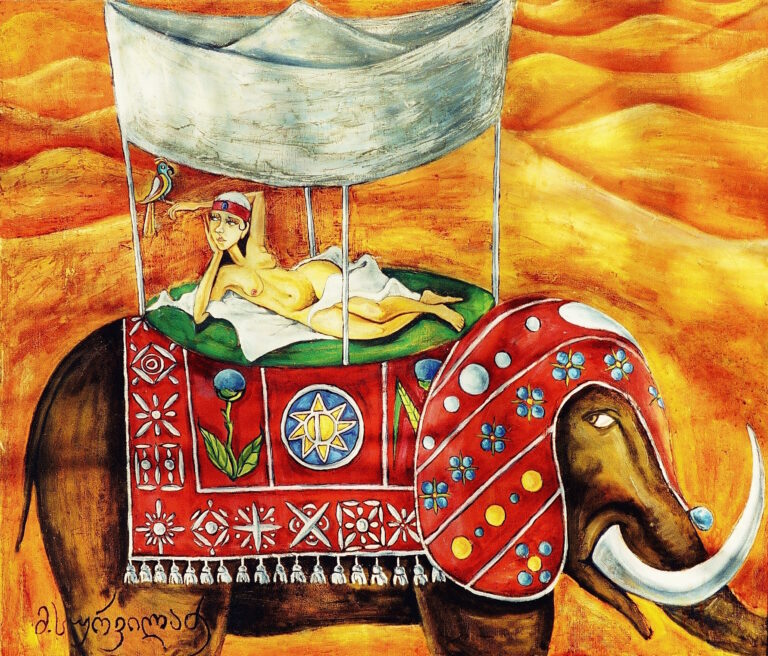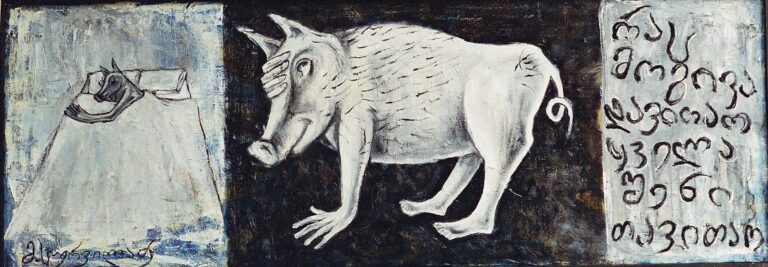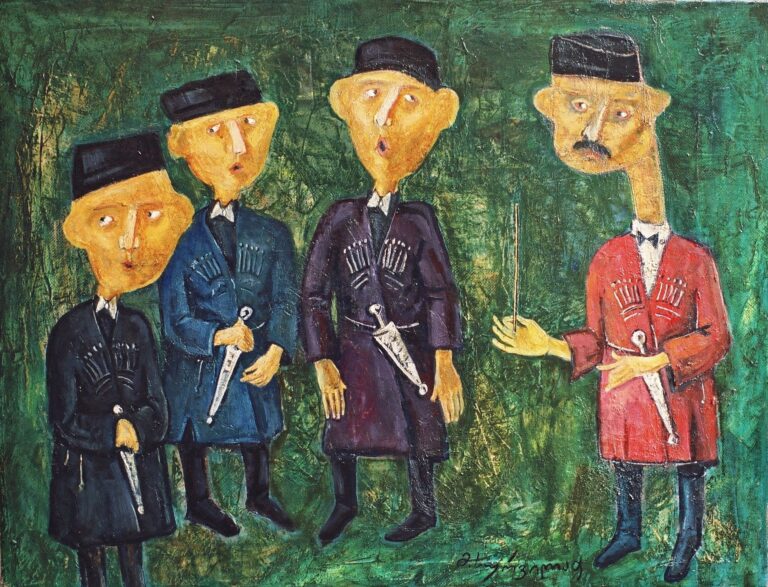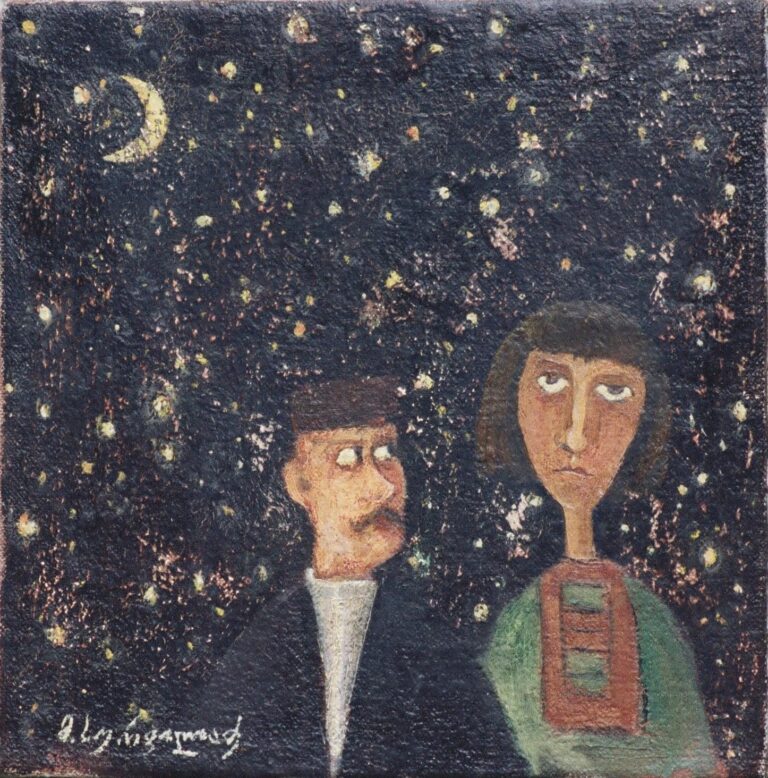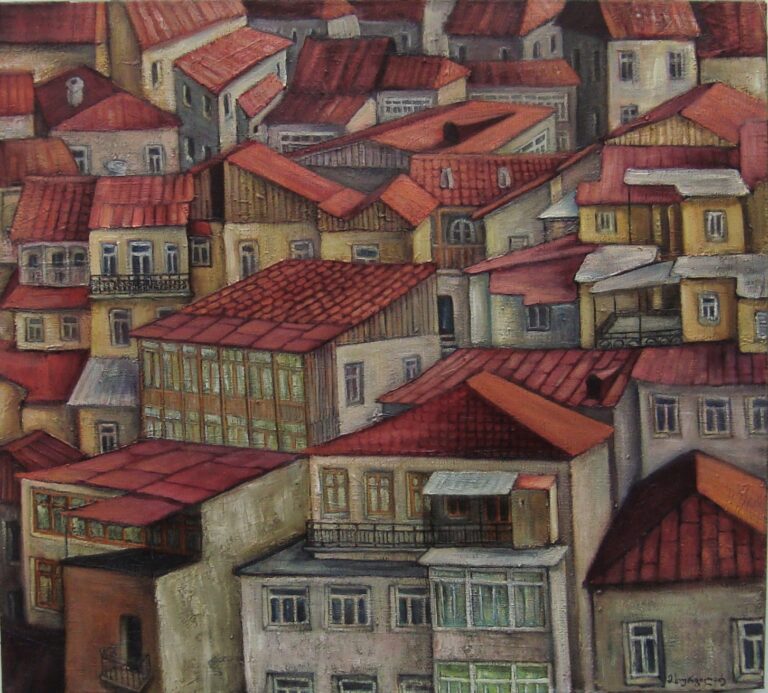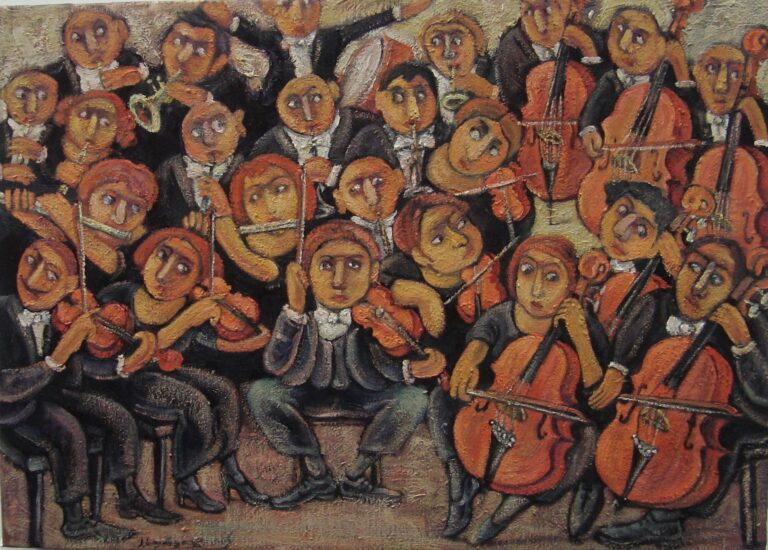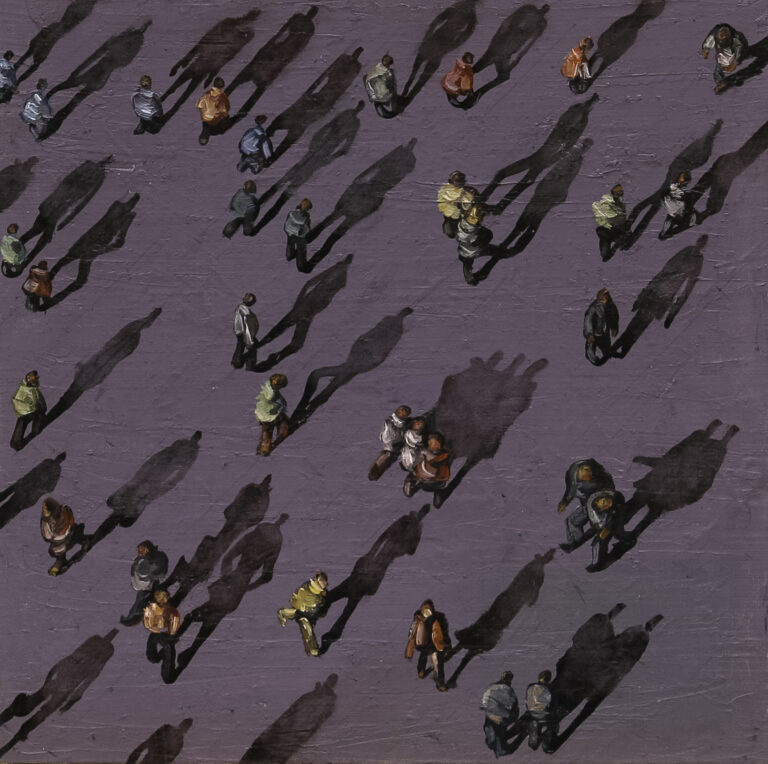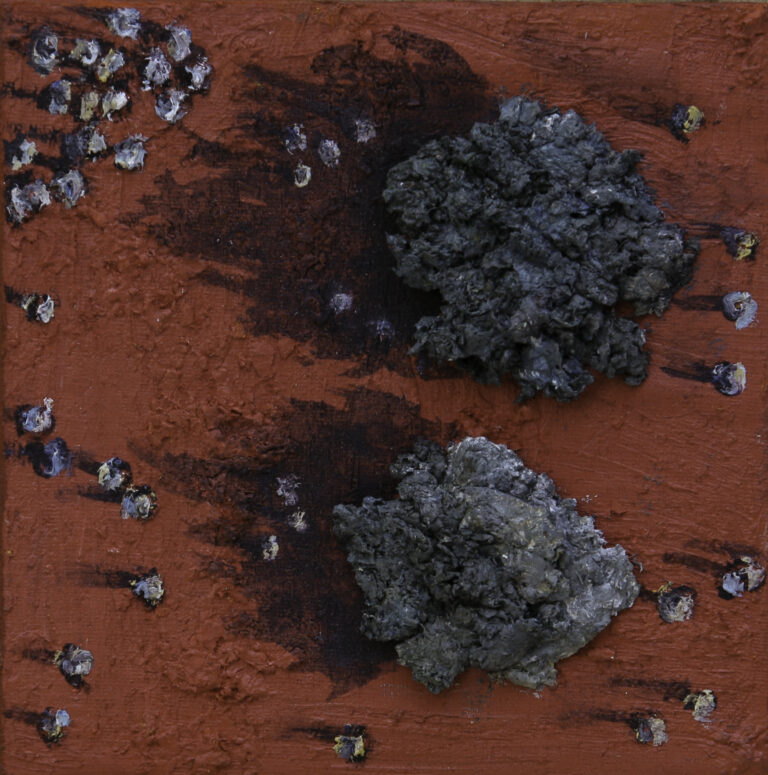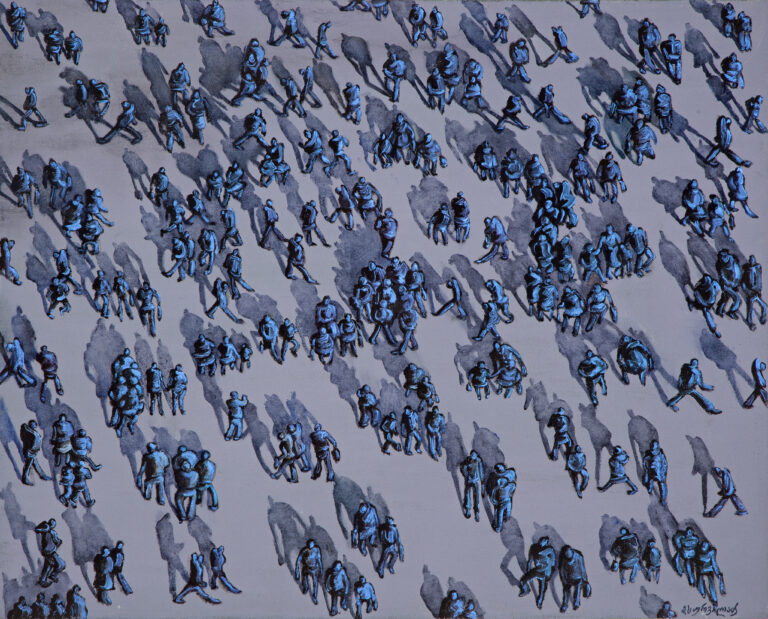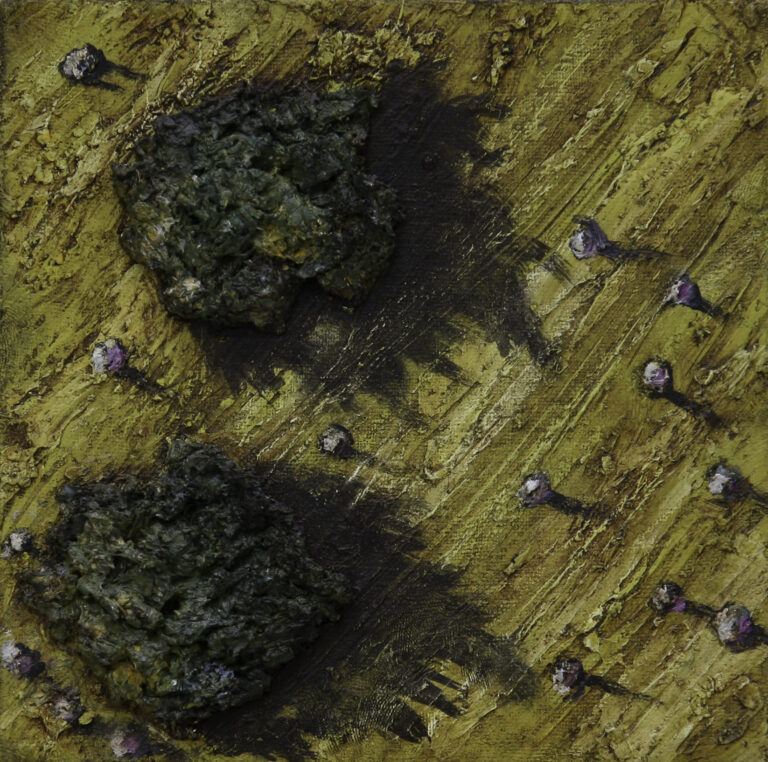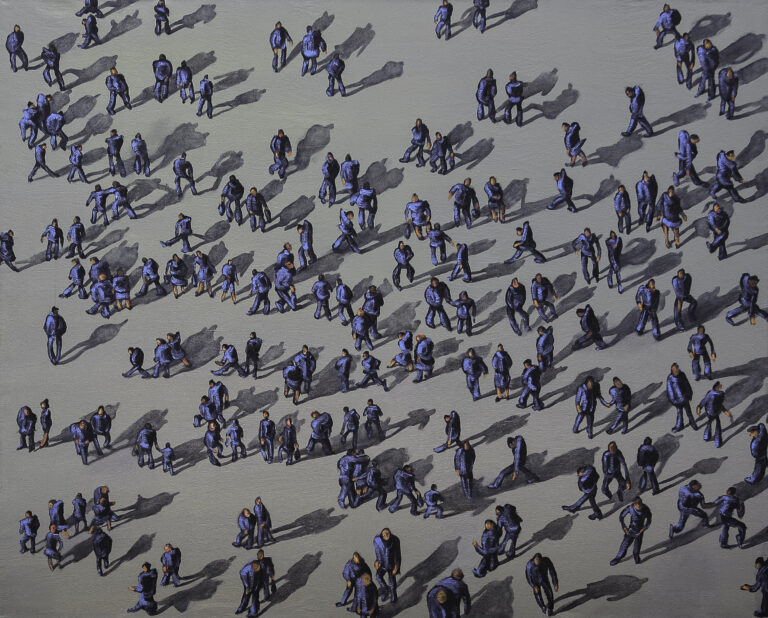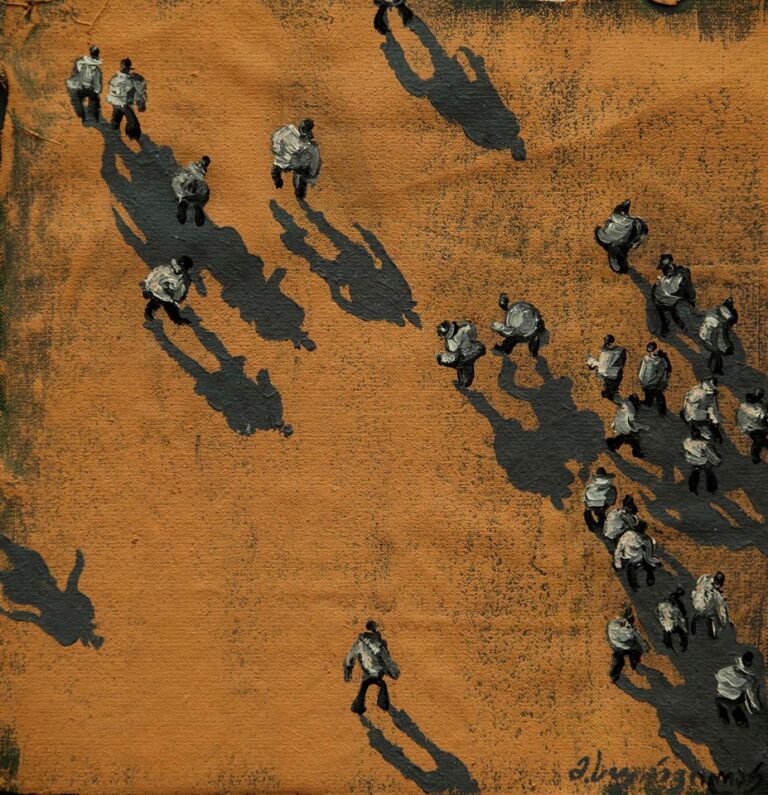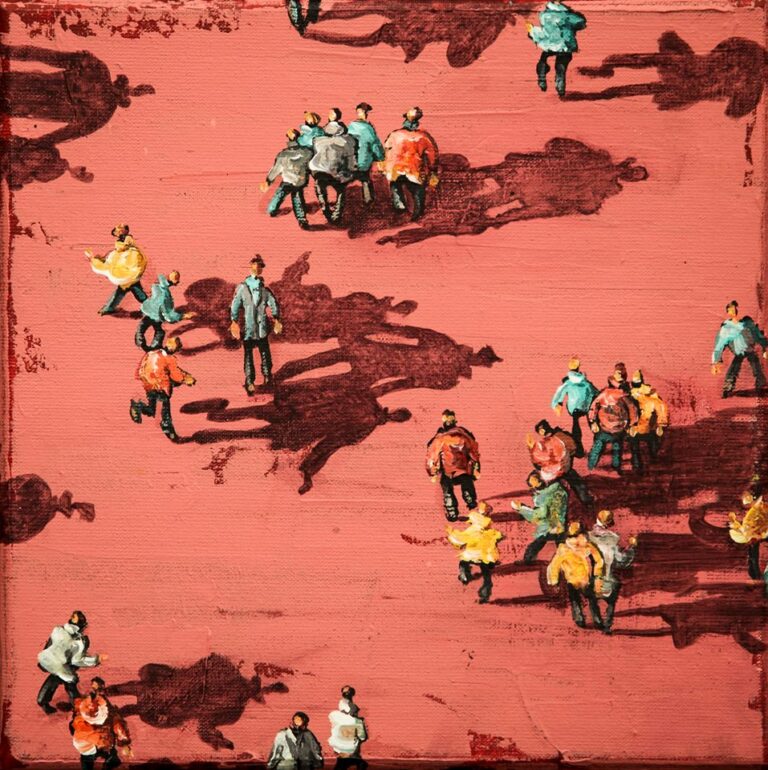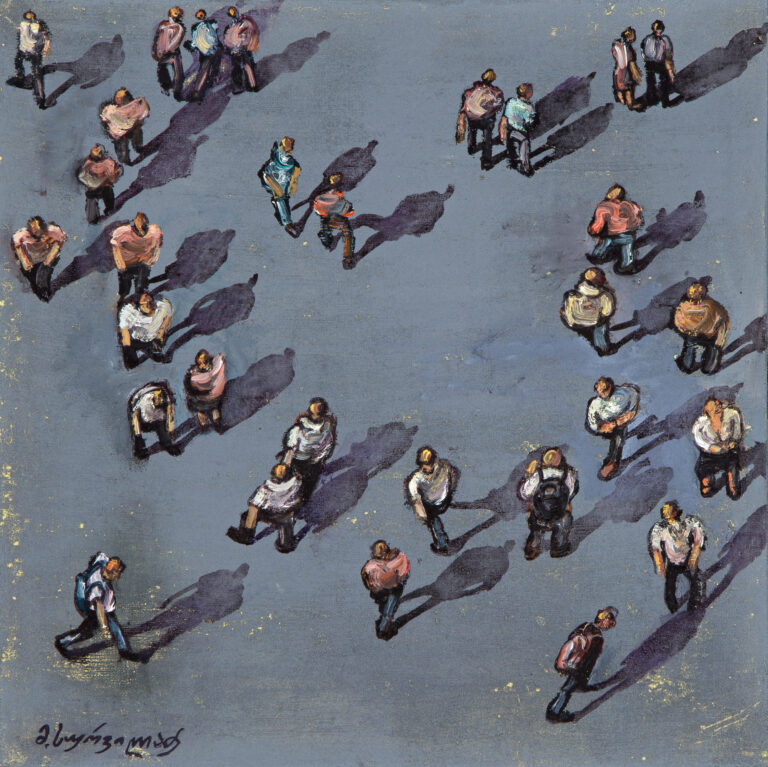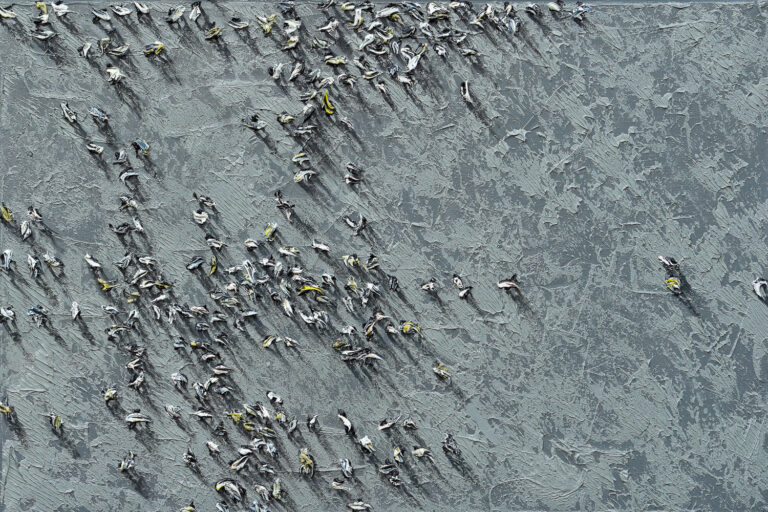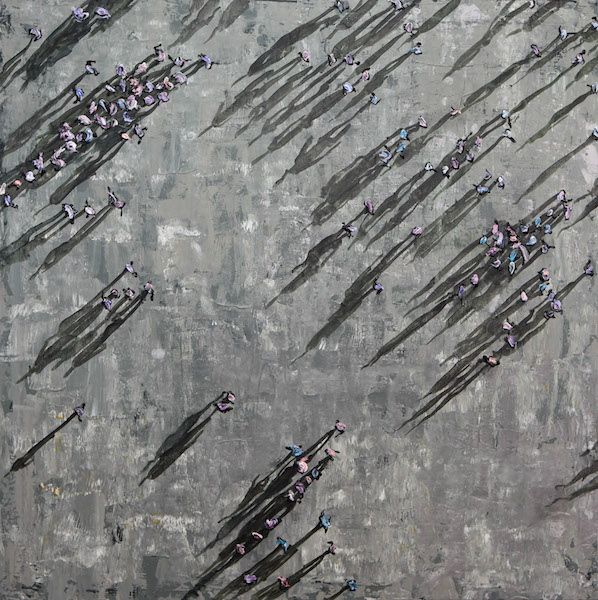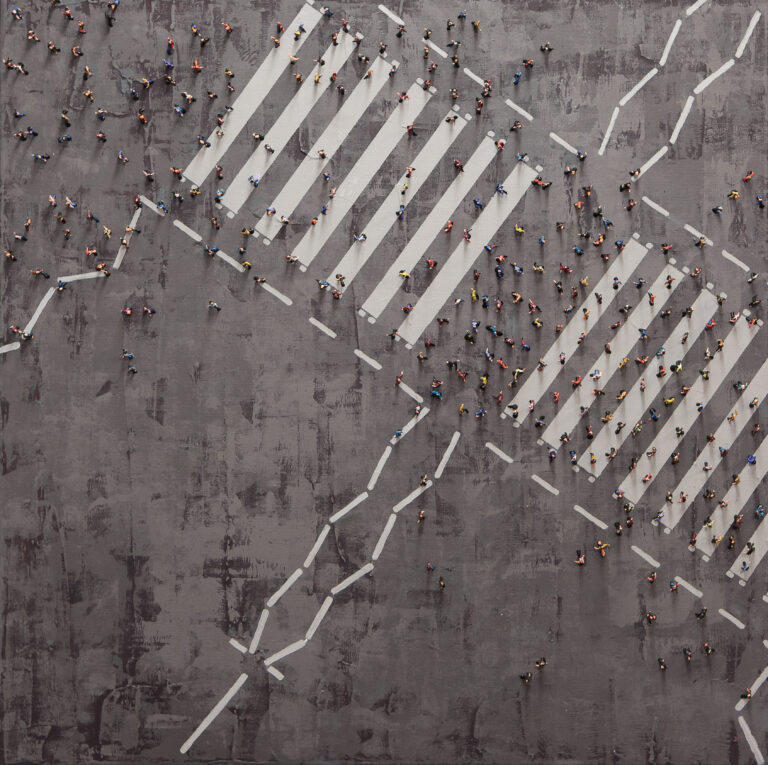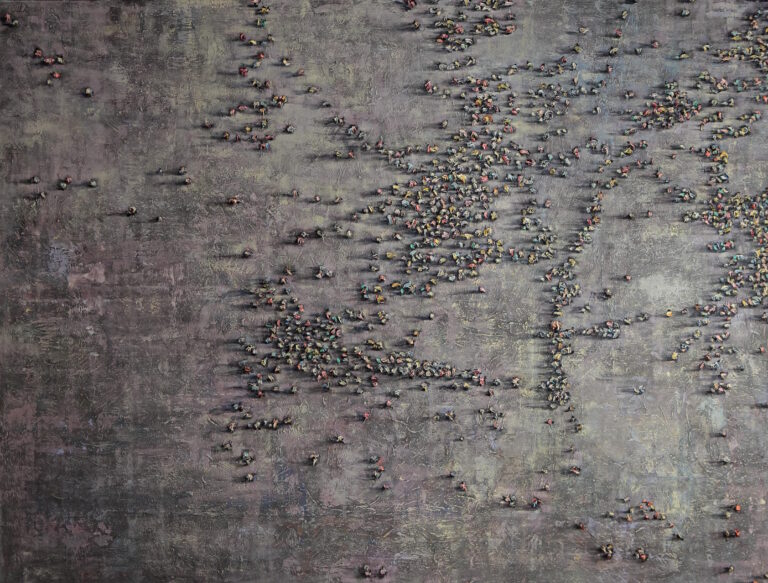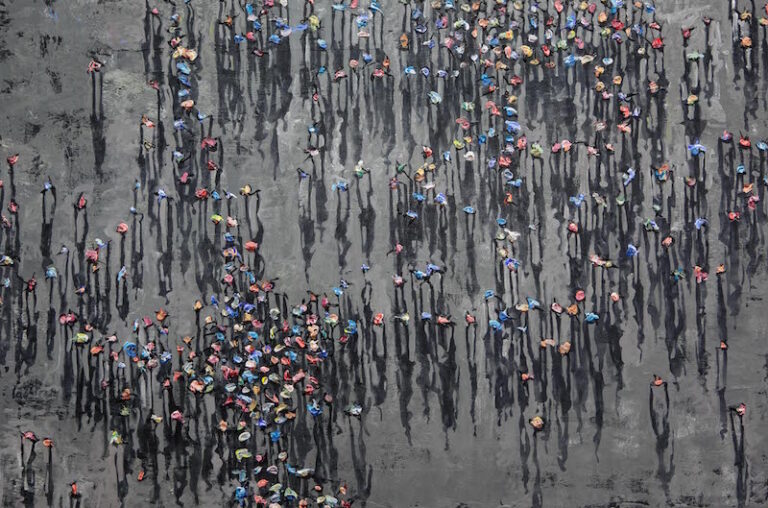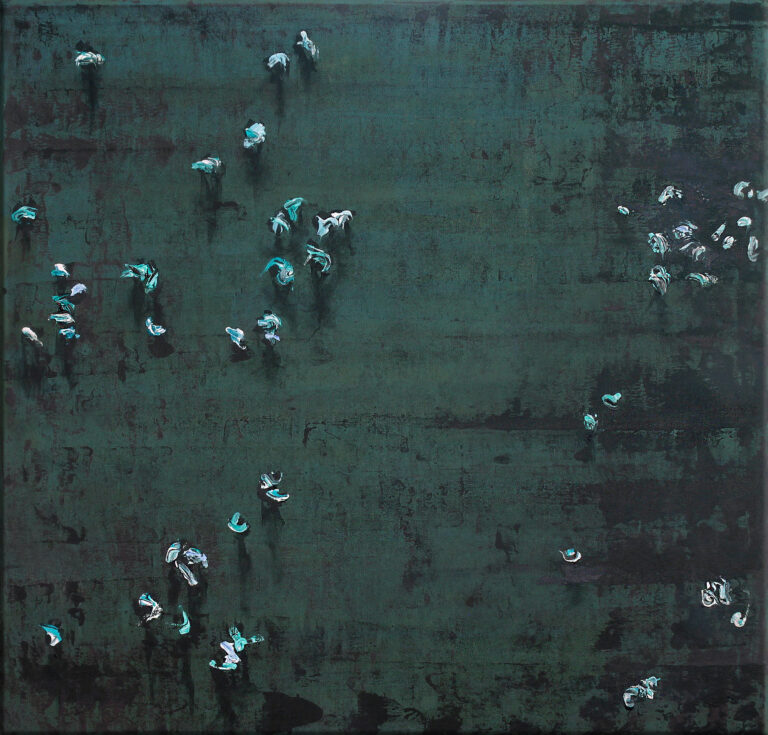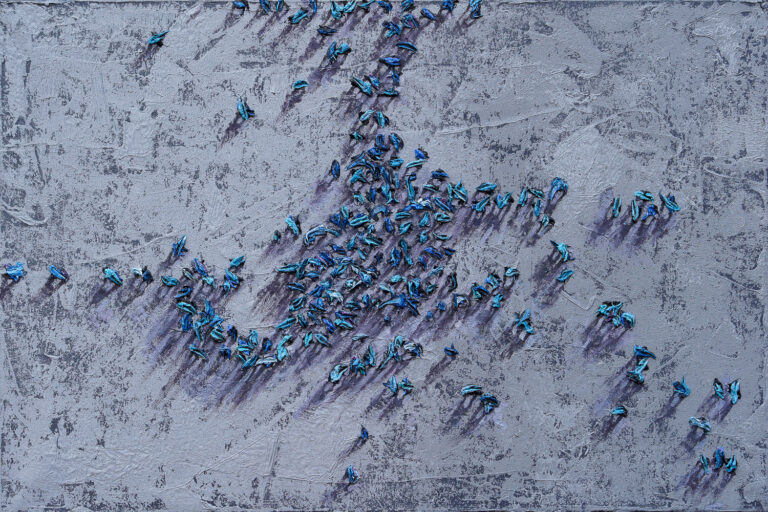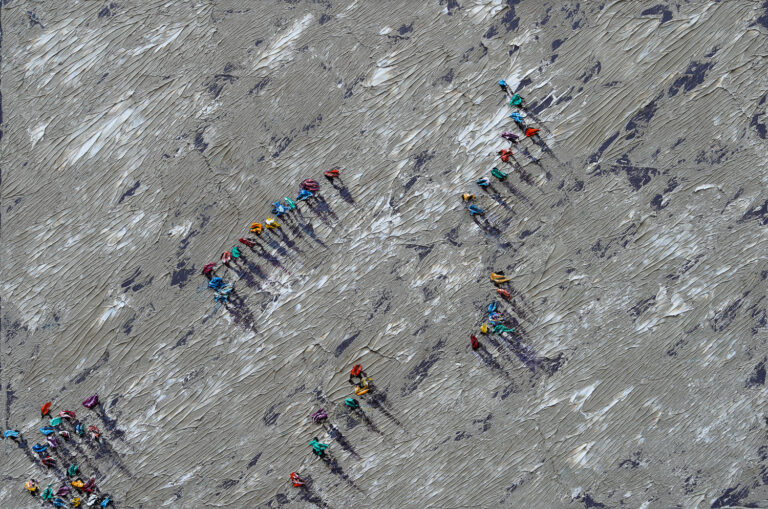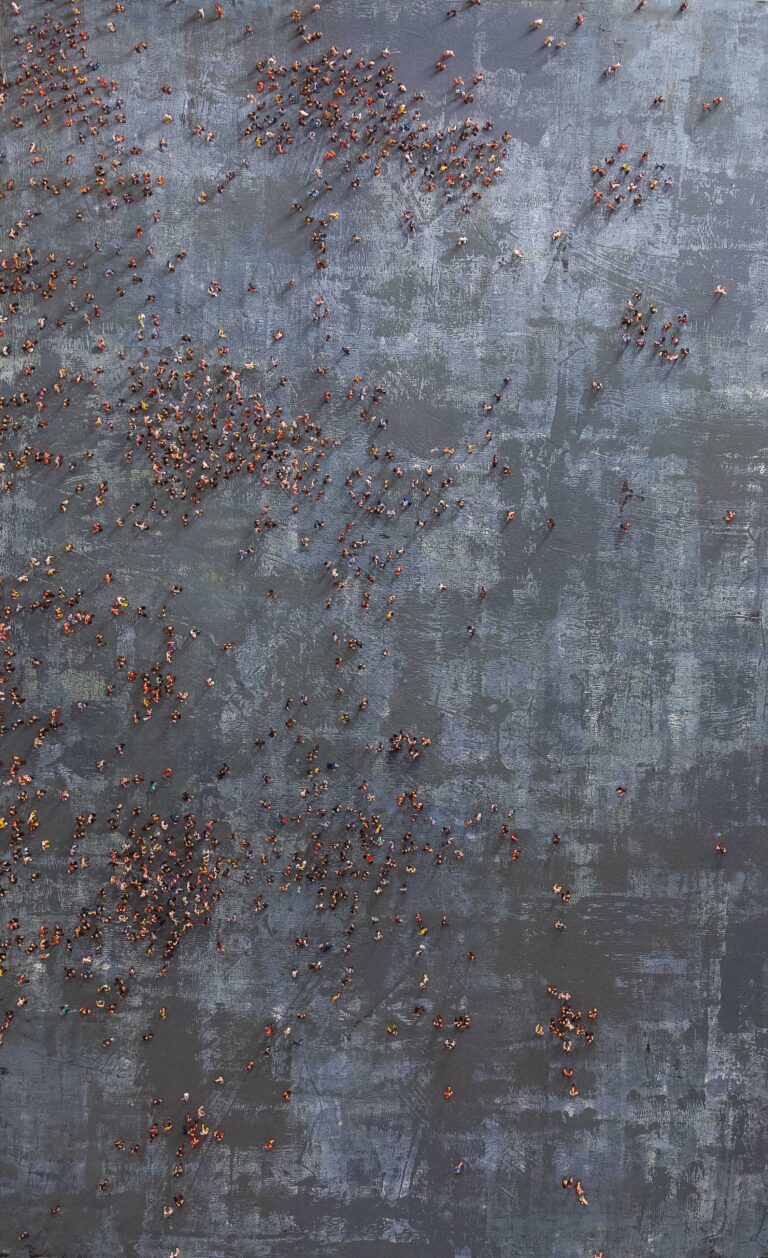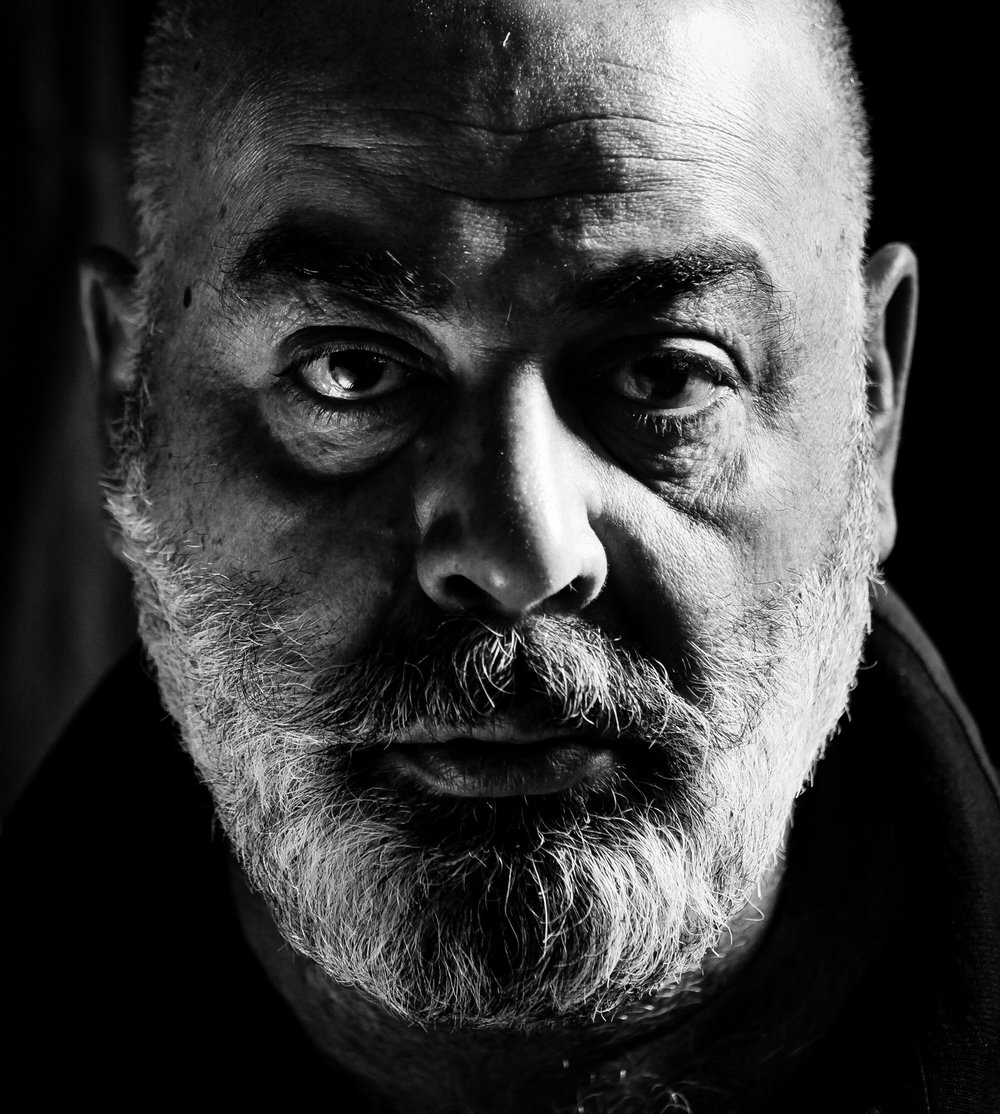
Meet the artist
"Once I realized how important and expressive a shadow could be for me, and what a shadow can convey, shadows and three-dimensional shapes began to appear in all my paintings. Previously, my works were more figurative and expressive, but inventing shadow motifs transformed them into more abstract visions. (...)
At its essence, I believe that art must elicit emotional reactions. These initial reactions can later evolve into profound feelings, fostering a connection and communication between the artist and the viewer. That's the moment when art truly works. »
Merab Surviladze, extract from interview "Ever moving shadow that inspires me", Personal structures, Venice Art Biennial, 2019
Figurative and Naive period
1992-2011
Initially, he created works in the naivety style, which featured grotesque and expressive patterns inspired by national motifs. He attributes this to the sentiments of the early years of emigration. Since the 1990s, he has been residing in Brussels, and during this period, signs of national culture have also been incorporated into his works, albeit without any ideological pathos. I was intrigued by heraldry, and romance of the past. Perhaps during the initial stages of emigration, this was more understandable. Figurative works, such as Naive art, consistently captured the attention of Western audiences, perhaps because they appeared foreign to their surroundings, exuding an exotic allure.
Discover some of my previous works
Here goes your text ... Select any part of your text to access the formatting toolbar.Here goes your text ... Select any part of your text to access the formatting toolbar.Here goes your text ... Select any part of your text to access the formatting toolbar.Here goes your text ... Select any part of your text to access the formatting toolbar.Here goes your text ... Select any part of your text to access the formatting toolbar.Here goes your text ... Select any part of your text to access the formatting toolbar.
Here goes your text ... Select any part of your text to access the formatting toolbar.Here goes your text ... Select any part of your text to access the formatting toolbar.Here goes your text ... Select any part of your text to access the formatting toolbar.Here goes your text ... Select any part of your text to access the formatting toolbar.Here goes your text ... Select any part of your text to access the formatting toolbar.Here goes your text ... Select any part of your text to access the formatting toolbar.
Transition to the "shadow" motif
2012-2014
Those familiar with Merab's paintings are also aware of the significant change that has occurred in his art.
Discover some of my previous works
Merab surviladze says that he does not have verbal comments on the news outside, he does not feel the need to express his thoughts, he reacts with images and these reactions are exactly what he sees. And what does the viewer see? Merab surviladze creates an original version of abstract painting, the conceptual basis of which is the shadow metaphor and its artistic-philosophical expansion. Relief mini-sculptures ‘emerging’ from the canvas are of different sizes and scales: in some places they look like groups of small men, in others they look like cosmic bodies shunned by a natural wave. Chaos and natural forces are the primary motive, manifested in different formats, tones and intensities. Expressive painting of Merab surbadze is a kind of riddle, which impresses the viewer with its unexpected visual and technical manner of execution. At first glance, similar canvases, where we seem to find different variations of one theme, also include elements of the narrative, behind which different stories are meant.
Anonymous, similar silhouettes are only perceived at a distance as a homogeneous mass, at close range each symbolizing an individual existence, to which one only turns the dimension of the shadow into the same. In his works Merab surbadze seems to ask a question about the phenomenon of shadow, its possible meanings: what happens to the body when it transforms into a shadow? Is it just a process of color transformation, when a colored given turns into a black or gray untrated silhouette, or are the shadow ‘demons ' expelled from internal processes? Is the shadow inseparable from the body, or can it exist independently? The main effect, on the other hand, that his canvases create seems to be shots of particles scattered by the force of natural currents, resembling the visual aesthetics of images depicting space systems.
Today Merab surviladze is an artist of Shadows and overlooks, - in his works you will immediately recognize the author. The silhouette-volumes on the textured canvases slowly turned into miniature sculptures, followed by new themes-for example., A uniformed version of anonymous characters, as ambiguous and enigmatic as all works on the theme of Shadows and overlooks. The character of these "three-dimensional" paintings is determined by the striving to rise from the surface, where figures created jewelically with paint are more and more trying to become independent sculptures. Probably, new experiments are expected from Merab surbiladze, this time with the medium of sculpture.
Shadows
2015-2023
Merab Surviladze's latest work is openly ambiguous and serves as a response to social themes that were heightened during the pandemic. 'Mastercard' is a large canvas that repeats the iconography of the the well-known logo, resembling an oversized bank card upon which small figures of people traverse, much like the streets of a megalopolis emptied by a pandemic. Merab Surviladze revels in contrasts in scales, angles, textures, and volumes. This time, the contrast is more ironic than in his earlier works. The theme of the famous brand, whose laconic and colorful logo typically radiates positivity and creates an illusion of enjoying life and a sense of stability, now appears 'suspicious' and is transformed into a scene of chaotic movements.
Discover some of my previous works
Merab Surviladze states that he refrains from providing verbal commentary on external news; he does not feel the need to express his thoughts in words. Instead, he reacts with images, and these images precisely depict what he observes. But what does the viewer perceive? Merab Surviladze creates an original form of abstract painting, grounded in the metaphor of shadows and its artistic-philosophical extensions. Relief mini-sculptures 'emerge' from the canvas, varying in size and scale. In some instances, they resemble groups of small men, while in others, they take on the appearance of cosmic bodies repelling a natural wave. Chaos and natural forces serve as the primary motifs, expressed in various formats, tones, and intensities.
Merab Surviladze's expressive paintings are akin to enigmas, leaving a lasting impression on the viewer due to their unexpected visual and technical execution. Upon initial inspection, these canvases, seemingly exploring various interpretations of a single theme, also contain narrative elements, each concealing distinct stories within.
Anonymous, similar silhouettes are only perceived as a homogeneous mass from a distance. Up close, each symbolizes an individual existence, with the dimension of the shadow turning each into something unique. In his works, Merab Surviladze seems to pose a question about the phenomenon of shadow and its potential meanings: What happens to the body when it transforms into a shadow? Is it merely a process of color transformation, turning a colored form into a black or gray untreated silhouette? Or are the 'shadow demons' expelled from internal processes? Is the shadow inseparable from the body, or can it exist independently? On the other hand, the primary effect that his canvases seem to create is akin to snapshots of particles scattered by the force of natural currents, resembling the visual aesthetics found in images depicting celestial systems.
Today, Merab Surviladze is an artist known for his focus on shadows and overlooks—his distinctive style immediately recognizable in his works. Silhouette-like volumes on textured canvases have gradually evolved into miniature sculptures, and he has explored new themes, such as a uniformed version of anonymous characters, as enigmatic and ambiguous as all his works in the realm of shadows and overlooks. The character of these 'three-dimensional' paintings is marked by a desire to rise from the surface, where figures, meticulously created with paint, increasingly strive to become independent sculptures. Perhaps we can expect new experiments from Merab Surviladze, this time in the realm of sculpture.
Let's meet!
Schedule an appointment or send me an email.
